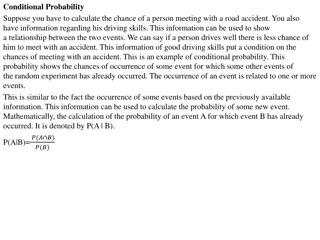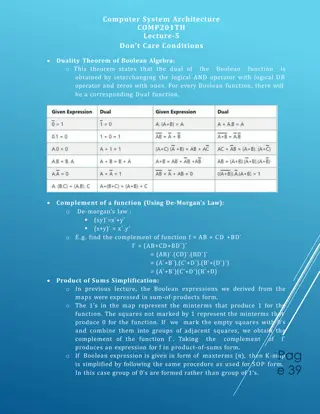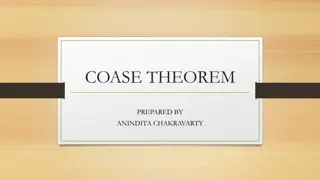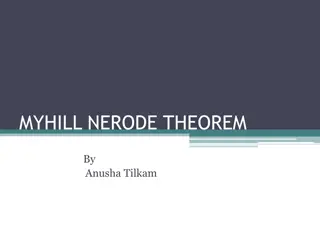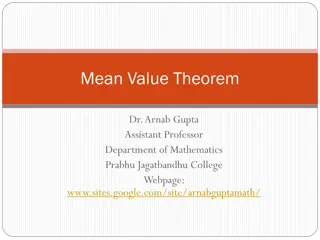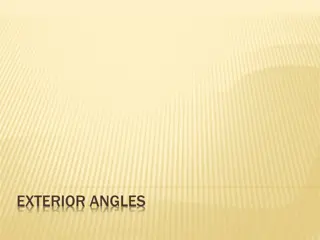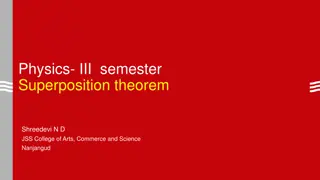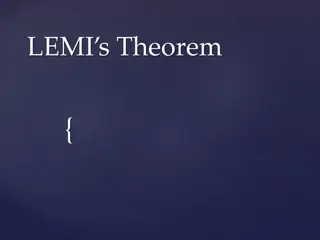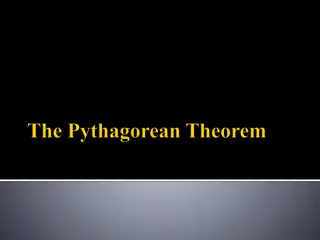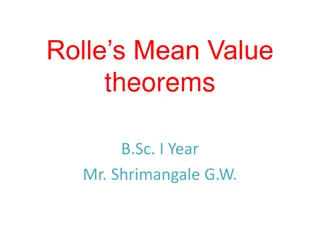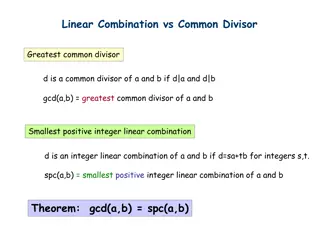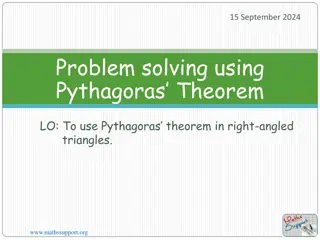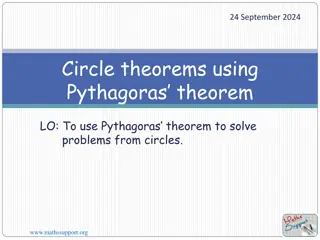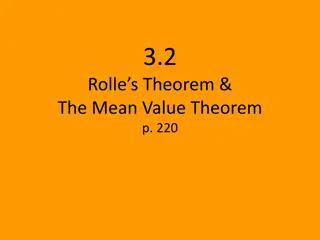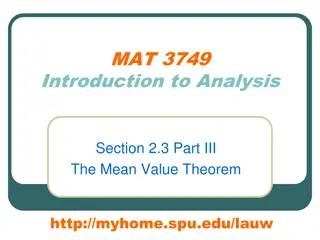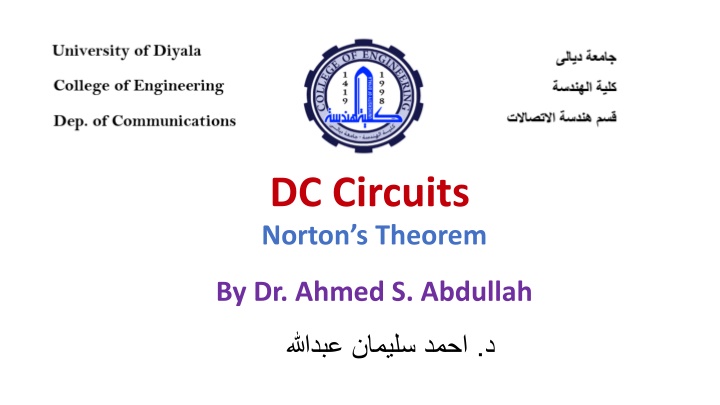
Norton's Theorem in DC Circuits
Norton's Theorem in DC circuits, explained by Dr. Ahmed S. Abdullah, states that a linear two-terminal circuit can be simplified to an equivalent circuit with a current source and resistor. Learn about the procedure and example calculations using Norton's Theorem.
Download Presentation

Please find below an Image/Link to download the presentation.
The content on the website is provided AS IS for your information and personal use only. It may not be sold, licensed, or shared on other websites without obtaining consent from the author. If you encounter any issues during the download, it is possible that the publisher has removed the file from their server.
You are allowed to download the files provided on this website for personal or commercial use, subject to the condition that they are used lawfully. All files are the property of their respective owners.
The content on the website is provided AS IS for your information and personal use only. It may not be sold, licensed, or shared on other websites without obtaining consent from the author.
E N D
Presentation Transcript
DC Circuits Norton s Theorem By Dr. Ahmed S. Abdullah .
Nortons Theorem Norton s theorem states that a linear two-terminal circuit can be replaced by an equivalent circuit consisting of a current source INin parallel with a resistor RN, where INis the short-circuit current through the terminals and RNis the input or equivalent resistance at the terminals when the independent sources are turned off.
Nortons Theorem ???? ??+ ?? ??=
Nortons Theorem Norton s Theorem Procedure EXAMPLE 1: Find the Norton s equivalent circuit. Then find the current through RLfor the circuit of figure. ??= 10
Nortons Theorem Norton s Theorem Procedure EXAMPLE 1: Find the Norton s equivalent circuit. Then find the current through RLfor the circuit of figure. Step 1:- Remove that portion of the network where the Norton s equivalent circuit is found. In Figure below, this requires that the load resistor RL be temporarily removed from the network. ??= 10
Nortons Theorem Norton s Theorem Procedure EXAMPLE 1: Find the Norton s equivalent circuit. Then find the current through RLfor the circuit of figure. Step 1:- Remove that portion of the network where the Norton s equivalent circuit is found. In Figure below, this requires that the load resistor RL be temporarily removed from the network.
Nortons Theorem Norton s Theorem Procedure EXAMPLE 1: Find the Norton s equivalent circuit. Then find the current through RLfor the circuit of figure. Step 2:- Mark the terminals of the remaining two-terminal network. (The importance of this step will become obvious as we progress through some complex networks.)
Nortons Theorem Norton s Theorem Procedure EXAMPLE 1: Find the Norton s equivalent circuit. Then find the current through RLfor the circuit of figure. Step 3:-Calculate RN by first setting all sources to zero (voltage sources are replaced by short circuits, and current sources by open circuits) and then finding the resultant resistance between the two marked terminals.
Nortons Theorem Norton s Theorem Procedure EXAMPLE 1: Find the Norton s equivalent circuit. Then find the current through RLfor the circuit of figure. Step 4:-Calculate IN by first returning all sources to their original position and finding the short-circuit current between the marked terminals.
Nortons Theorem Norton s Theorem Procedure EXAMPLE 1: Find the Norton s equivalent circuit. Then find the current through RLfor the circuit of figure. Step 4:-Calculate IN by first returning all sources to their original position and finding the short-circuit current between the marked terminals.
Nortons Theorem Norton s Theorem Procedure EXAMPLE 1: Find the Norton s equivalent circuit. Then find the current through RLfor the circuit of figure. Step 4:-Calculate IN by first returning all sources to their original position and finding the short-circuit current between the marked terminals.
Nortons Theorem Norton s Theorem Procedure EXAMPLE 1: Find the Norton s equivalent circuit. Then find the current through RLfor the circuit of figure. Step 4:-Calculate IN by first returning all sources to their original position and finding the short-circuit current between the marked terminals.
Nortons Theorem Norton s Theorem Procedure EXAMPLE 1: Find the Norton s equivalent circuit. Then find the current through RLfor the circuit of figure. Step 5:-Draw the Norton s equivalent circuit with the portion of the circuit previously removed replaced between the terminals of the equivalent circuit. ???? ??+ ?? =(??)(? ) ? + ?? = ??= ? ??= ?.? ? ??= ? ??= ?? = 10
Nortons Theorem EXAMPLE 1: Find the Norton s equivalent circuit. Then find the current through RLfor the circuit of figure. Converting the Norton equivalent circuit to a Th venin equivalent circuit.
Nortons Theorem EXAMPLE 1: Find the Norton s equivalent circuit. Then find the current through RLfor the circuit of figure. Converting the Norton equivalent circuit to a Th venin equivalent circuit. = ??= ? ??= ? ??= ?? = 10 ? ? = 10 ???= ????= ?? ? = ??
Nortons Theorem EXAMPLE 2: Find the Norton equivalent circuit for the network external to the 9 resistor in Figure.
Nortons Theorem EXAMPLE 2: Find the Norton equivalent circuit for the network external to the 9 resistor in Figure. Solution:- Step 1 and 2:-
Nortons Theorem EXAMPLE 2: Find the Norton equivalent circuit for the network external to the 9 resistor in Figure. Solution:- Step 3:-
Nortons Theorem EXAMPLE 2: Find the Norton equivalent circuit for the network external to the 9 resistor in Figure. Solution:- Step 4:-
Nortons Theorem EXAMPLE 2: Find the Norton equivalent circuit for the network external to the 9 resistor in Figure. Solution:- Step 4:-
Nortons Theorem EXAMPLE 2: Find the Norton equivalent circuit for the network external to the 9 resistor in Figure. Solution:- Step 4:-
Nortons Theorem EXAMPLE 2: Find the Norton equivalent circuit for the network external to the 9 resistor in Figure. Solution:- Step 5:- ???? ??+ ?? =(?.???)(? ) ? + ? ??= =??.?? ?? = ?.?? ? ??= ? ??= ?.??? = 9 Or ??=?? ? =?.??? == ?.?? ? ?
References Boylestad, Robert L. Introductory circuit analysis. Pearson Education, 2010. Robbins, Allan H., and Wilhelm C. Miller. Circuit analysis: Theory and practice. Cengage Learning, 2012. Sadiku, Matthew NO, and Chales K. Alexander. Fundamentals of electric circuits. McGraw-Hill Higher Education, 2007.

